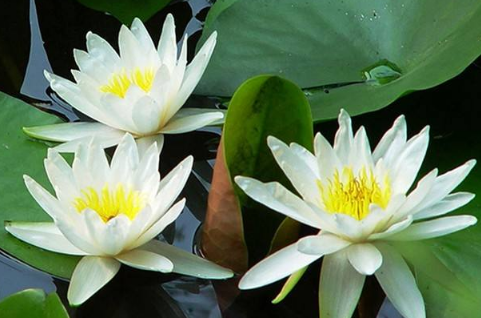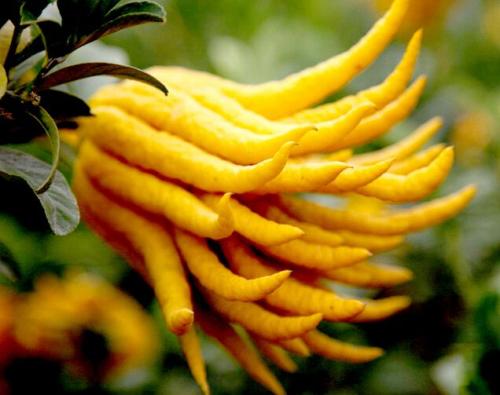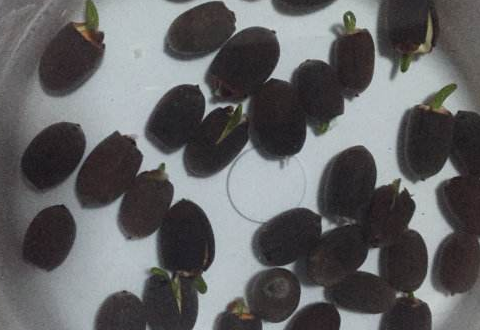Matters needing attention in planting bowl lotus
1. illumination
The lotus should not be kept indoors for a long time, otherwise it will grow slowly, so it should receive more light outdoors, so that the plant will grow more vigorously.

2. fertilization
Lotus love fertilizer, lack of fertilizer plants will lack vitality, before planting should add a small amount of decomposed cake and other base fertilizer. Although lotus love fertilizer, but not excessive, cultivation can meet the needs of growth by adding base fertilizer.
3. pruning
The leaves of the lotus in its peak period are dense, which will affect the growth and flowering of the plant, so some leaves should be cut off appropriately to promote plant growth.
How to grow lotus seeds and precautions
How do you plant a bowl of lotus?
The planting method of lotus is different from that of ordinary flowers. Because the seeds of lotus are relatively hard, they need to undergo shell breaking treatment. The pericarp of lotus seeds has a firm and thick special structure. After the seeds are fully mature and dried, moisture and air are not easy to penetrate, and the respiration is very slow. They are forced to dormancy.
Lotus is anatropous ovule, embryo born at the top of the seed, broken shell should break the base of the seed, that is, the seed in the receptacle on the end of the birth, that is, the lotus seed concave end. It can be broken with scissors or vice. Before sowing, as long as the peel is generally worn, the brown seed coat is seen; when the shell is clamped, as long as 2 to 3 mm cracks are available at the base, do not clip too deep to avoid damaging the embryo. Soak seed a day later, wait for embryo to absorb water embryo expansion, peel water soft, you can use your hands along the broken shell to peel off 1/3 of the peel, so that the embryo exposed, in order to facilitate embryo elongation. It must be noted that the broken shell part cannot be too large. If the shell of the lotus seed is completely removed, the embryo will lose its protection and will easily rot and die.
Second, the planting method of lotus
1, sowing time: lotus seed has no dormant period, as long as the water temperature can be maintained above 16℃, all seasons can be sown. Lotus seeds need 60~80 days from sowing to flowering in spring under suitable conditions of temperature and light. Best time to sow: March to early May.
2. Seed treatment: the shell of lotus seed is hard and dense, and artificial break must be carried out before soaking. One end of lotus seed has small protruding tip and the other end has small concave point. Grind the end with small pits on rough concrete or use pliers to pinch a small opening. Be careful not to pinch the embryo or shell it.
3, soaking germination: summer water temperature 20℃~30℃ is very suitable for lotus seed germination, depending on the number of seeds with a bowl or basin of water, to soak the seeds for the degree. Put it indoors, change the water twice a day, and it can germinate within 1 week. After budding, put it in the sun to strengthen the light and not lack water. After 2 weeks, fine roots and 2~3 tender small lotus leaves grow. When the leaves are like money, the roots can be planted separately.
4. Seedling transplanting: Select a bottomless pottery pot or plastic flower pot with a diameter of 18cm~30cm, add half a pot of pastoral soil or river pond mud without chemical pollution, soak in water two weeks in advance, and do not fertilize. When transplanting, press the fine roots of the small lotus seedlings into the mud, one plant per potted plant, add appropriate amount of water after transplanting, and do not submerge the small lotus leaves with water.
5. Management: After 2~3 weeks of transplanting, when it enters the peak growth period, if the leaves are yellow, a small amount of nitrogen, phosphorus and potassium compound fertilizer can be applied, and thin fertilizer should be applied frequently. Lotus love warm, love light, not tolerant of shade. When the outside temperature is lower than 16℃, the growth is slow and should be moved to the sunlight greenhouse.
Third, the lotus planting precautions
1. The bowl lotus is delicate. At noon in summer, it should avoid the scorching sun and move to a cool place. Moreover, the indoor flowers should not be displayed for too long, not more than 3 days at a time.
2, the most taboo in the shade of lotus conservation, not like indoor foliage plants, placed indoors culture. Light is insufficient, lotus leaves grow green, can not conceive bud. In the courtyard cultivation bowl lotus, flowerpots must be placed in sufficient light or south balcony on the outer edge. Blooming season, need to be placed indoors to watch, can take early in late out, or late in early out, should still maintain a certain light every day. Lotus need to have sufficient light, but also avoid storm after rain.
The above is an introduction to the cultivation method of bowl lotus, hoping to help everyone cultivate bowl lotus, bowl lotus bloom in summer with you to experience a poetic feeling.
Is it good to plant lotus? How to grow lotus and precautions
The flower bonsai net guide: today's flower bonsai net Xiaobian for everyone to share is about the lotus good kind? Let's take a look at the article on planting methods and precautions of lotus.
The bowl lotus is a miniature lotus, not full feet tall, leaves round like butterflies, especially suitable for planting in smaller containers. When will the lotus seeds be planted? How? And what do you need to prepare before planting the lily?
The time to prepare for planting.
Many flower friends like to plant bowl lotus at home, shaped like lotus beauty, although there is no Daming Lake proud posture, but a small bowl lotus at home, enough to let you feel the beauty of immersion. But the question is, when to buy seeds and when to plant them?
In fact, the seeds of the lotus can be sown in all seasons. As long as the water temperature is controlled at about 16℃, the seeds can germinate normally. The suitable growth temperature after seed germination is 15~30℃. For families with low indoor temperature in winter, sowing in spring can be selected.
material preparation
Lotus seed, file, silt, white pot, sand.
How to grow lotus seeds
First of all, the seeds are cracked. When you eat lotus seeds, you will notice that there is a layer of green skin outside the lotus seeds. After the lotus seeds mature, the outer skin becomes black and hard. It is said that as long as this layer of white skin is retained, lotus seeds can be buried in the soil for a hundred years or even the year before without rotting. If you don't treat the seeds before planting them, you may never see them germinate.
The lotus seed has a sharp end and a round end. Make a small opening at the round end and grind it on rough concrete or file it. In short, it must be opened to allow water to seep into the seeds and germinate as soon as possible.
seed soaking pregermination
The next step is to soak the broken seeds in warm water at 30℃ for germination, soak for 2~7 days, and change the water 2~3 times a day. General seeds will grow small buds on the 5th day. If they haven't sprouted in 7 days, they won't germinate again. Throw away such seeds.
In addition, the water temperature of soaking seeds should be controlled at about 30℃, not higher than 40℃ or lower than 20℃, otherwise the seeds will germinate slowly.
hydroponic seedling
After the seeds germinate, they are cultured in water at 25℃ for 5 to 7 days. In the process of hydroponic cultivation, ensure that the water content is about 10 cm, the light is sufficient, and do not change the water and flip frequently, so as not to affect the growth of the leaves.
Water culture for a period of time, the first leaf is open, the second leaf is about to open, and grow white roots, at this time can be planted on the mud.
pot selection
According to the needs of planting, the prepared silt or fine sand is put into a flowerpot, soil, water and fertilizer are added, stirred evenly and allowed to stand still. When the water is clear, plant the seeds of the lotus. Seeds all into the mud, leaves freely spread on the water surface, water must not cover the leaves. In addition, in the planting process, to handle gently, do not break the petiole.
Family planting, for the sake of beauty, after planting seeds, spread a layer of stones on the water surface to ensure that the water surface is clear and increase ornamental.
flowering
Different varieties of lotus flower time is different, generally speaking, lotus grow 5~17 leaves after the emergence of flower buds slowly. However, some varieties grow buds and flowers soon after they grow leaves. As long as they were properly maintained, it was only a matter of time before the lotus bloomed!
The container should be large.
The container for planting the bowl lotus should be a little bigger. If only ordinary bowls at home were used, they would be too small and shallow, and the nutrient soil would be too little. The bowl lotus would not grow fully, and the roots and leaves would not stretch well. Therefore, planting the bowl lotus would have no meaning!
Sunshine should be sufficient
In the maintenance of the lotus, can not blindly focus on the lotus will be placed indoors decorate the environment, indoor maintenance for a long time, lotus see no sunlight, slow growth. Often take the bowl lotus outside, accept the sun, only the basin soil warm up, growth will be more vigorous.
Fertilize lightly
Lotus like fertilizer, like nitrogen fertilizer, during the growth period to ensure adequate nutrients, in addition to planting in the soil before adding enough nutrients, but also timely topdressing. Topdressing is based on the size of the flowerpot, small plants, small flowerpots should also be less fertilizer. If fertilization is too much, there will be light long leaves do not bloom phenomenon, more serious point, plant death.
Leaf length to be cut
During the maintenance process, the leaves of the lotus will grow longer and denser, which will affect the growth of the lotus to a certain extent. Some leaves should be removed properly to promote the respiration and ventilation of the plant.
The cultivation method and precautions of lotus
Lotus planting techniques and other flowers are not the same, now let us look at the lotus planting techniques and precautions. Look at how the lotus grows. A bowl of lotus growth conditions 1, soil cultivation with fertile pond mud is the most ideal, if it is difficult to obtain pond mud, the use of fairy soil can also be (black fairy soil is better) 2, sunshine must give lotus sufficient sunshine. Flower growers should not only place the bowl lotus indoors to decorate the environment and enjoy it, put it indoors for a long time so that it can not see the sun, forget that it is a plant that loves sufficient sunlight, only the pot soil warms up, can it grow rapidly. 3. The amount of water varies according to the stage. When the lotus is first planted, water should not be too much. Too much water will reduce the temperature, which will be unfavorable for the rooting and development of the seedlings, and affect their breathing and ventilation, even cause rotten roots. As the leaves grow, the bowl needs to be gradually filled with water to adapt to the need for its leaves to float on the water surface for photosynthesis. Otherwise, the leaf edges will be scorched and yellowed.
2 bowl lotus planting points 1, sowing time: lotus seed no dormant period, as long as the water temperature can be maintained at 16℃ above, can be sown in all seasons. Lotus seeds need 50-60 days from sowing to flowering in spring and 60-80 days in autumn under suitable conditions of temperature and light. 2. Seed treatment: the seeds are treated by breaking the shell. The pericarp of lotus seeds has a firm and thick special structure. After the seeds are fully mature and dried, water and air are not easy to penetrate, and the respiration is very slow. It is forced to dormancy. Therefore, lotus seeds can be buried in the soil for hundreds of years or even thousands of years without germination or decay, which is the reason for the longevity of lotus seeds. In order to make lotus seed absorb water and oxygen after sowing, break forced dormancy state and enter germination growth, shell breaking treatment must be carried out before seed germination.
Lotus is anatropous ovule, embryo born at the top of the seed, broken shell should break the base of the seed, that is, the seed in the receptacle on the end of the birth, that is, the lotus seed concave end. It can be broken with scissors or vice. Before sowing, as long as the pericarp is generally worn (that is, the shell of the lotus seed), until the brown seed coat is seen; when the shell is clamped, as long as 2~3 mm cracks can be made at the base, do not clip too deep, so as not to hurt the embryo. Soak seed a day later, wait for embryo to absorb water embryo expansion, peel water soft, you can use your hands along the broken shell to peel off 1/3 of the peel, so that the embryo exposed, in order to facilitate embryo elongation. It must be noted that the broken shell part cannot be too large. If the shell of the lotus seed is completely removed, the embryo will lose its protection and will easily rot and die. 3, soaking germination: summer water temperature 20℃-30℃ is very suitable for lotus seed germination, depending on the number of seeds with a bowl or basin of water, to soak the seeds for the degree. Put it indoors, change the water twice a day, and it can germinate within 1 week. After budding, put it in the sun to strengthen the light and not lack water. After 2 weeks, fine roots and 2~3 tender lotus leaves grow out. When the leaves are like money, the roots can be loaded separately.
4. Seedling transplanting: Select a bottomless pottery pot or plastic flower pot with a diameter of 18cm~30cm, add half a pot of pastoral soil or river pond mud without chemical pollution, soak in water two weeks in advance, and do not fertilize. When transplanting, press the fine roots of the small lotus seedlings into the mud, one plant per potted plant, add appropriate amount of water after transplanting, and do not submerge the small lotus leaves with water. 5. Autumn and winter management: After 2~3 weeks of transplanting, wait until it enters the peak growth period. If the leaves are yellow, a small amount of nitrogen, phosphorus and potassium compound fertilizer can be applied, and the fertilizer is applied frequently. Lotus love warm, love light, not tolerant of shade. When the outside temperature is lower than 16℃, the growth is slow and should be moved to the sunlight greenhouse.
- Prev

Culture methods of bergamot
1. Light and temperature bergamot likes warm, humid and sunny environment, so it is necessary to ensure sufficient light. In addition, the most suitable growth temperature of bergamot is 22-24 degrees, so we should pay attention to temperature control. 2. Watering bergamot is resistant to waterlogging and drought, so we should often water bergamot.
- Next

Aquaculture methods of water lilies
1. Prepare seeds, nutrient solutions, and water culture utensils. All the selected seeds must have small mouths, otherwise the seeds will not germinate. two。 Soak the selected seeds in water, and the water may be turbid after one day, so change to clean water and soak for three days. 3. The soaked seeds will sprout.
Related
- Fuxing push coffee new agricultural production and marketing class: lack of small-scale processing plants
- Jujube rice field leisure farm deep ploughing Yilan for five years to create a space for organic food and play
- Nongyu Farm-A trial of organic papaya for brave women with advanced technology
- Four points for attention in the prevention and control of diseases and insect pests of edible fungi
- How to add nutrient solution to Edible Fungi
- Is there any good way to control edible fungus mites?
- Open Inoculation Technology of Edible Fungi
- Is there any clever way to use fertilizer for edible fungus in winter?
- What agents are used to kill the pathogens of edible fungi in the mushroom shed?
- Rapid drying of Edible Fungi

